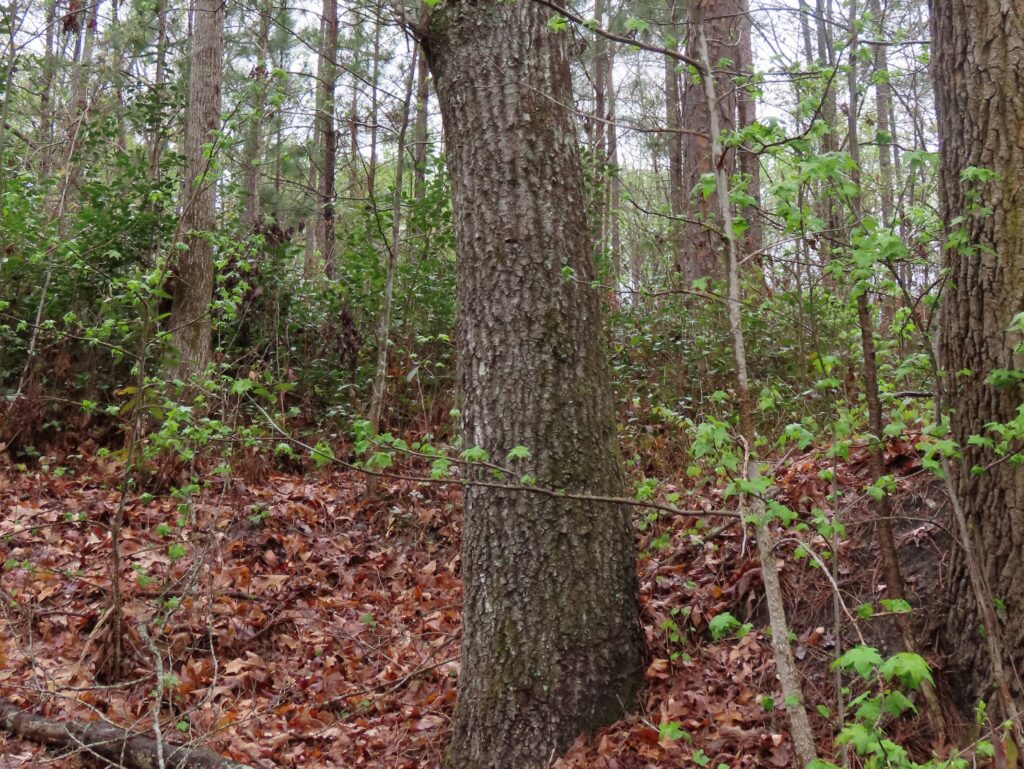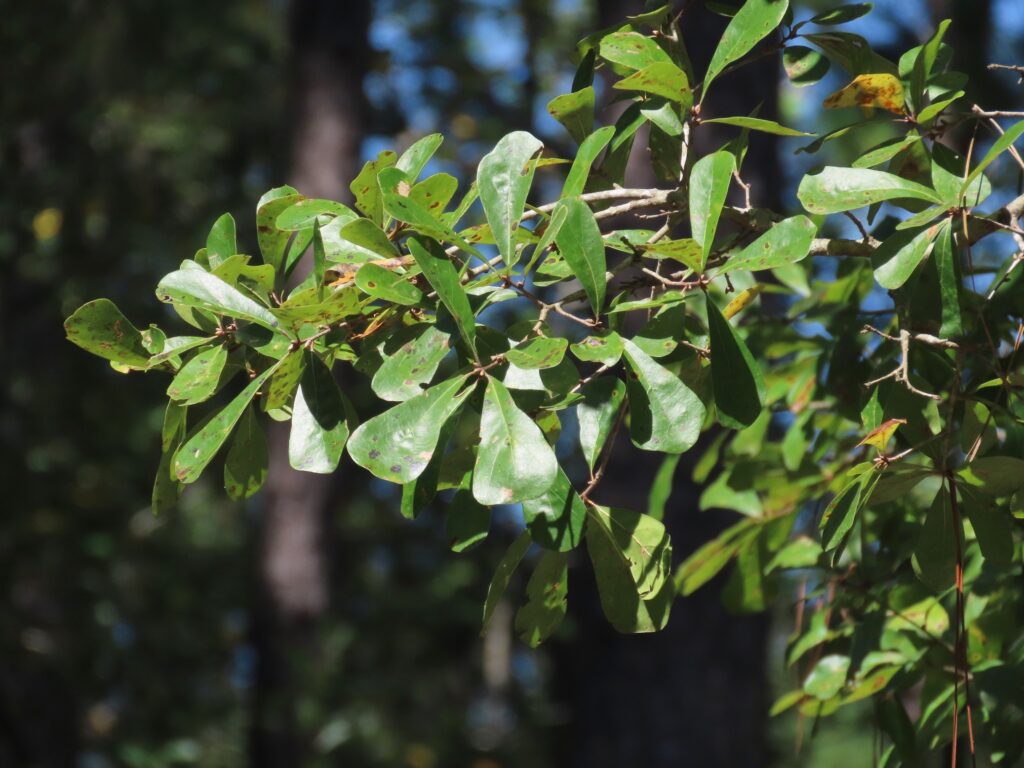




This week for Flora and Fauna Friday we have the blocker of driveways, scourge of the fence-row, and widow-maker in waiting, the Water Oak (Quercus nigra).
Water Oak is a medium-large oak in the red oak group with a rounded growth form vaguely similar to a Live Oak, but taller and with more vertically oriented branches. Water Oak has fairly smooth, gray bark with pale horizontal bands when young and shallow vertical fissures, bottomed by a rusty seam, which develop with age. Water Oak has emerald green leaves with an unmistakable three-lobed spatula-shape, although leaves at branch tips can be variable in shape. Water Oak can live on a wide range of soils but is most at home on wet soils in floodplains, pond edges, and the margins of swamps. It likes a high water table and clay soils but can grow well on sandier upland soils when it doesn’t have to compete in the forest canopy. It has small, spherical acorns and is a fairly reliable producer for an oak. Water Oak is a contender for the most widespread and prolific oak species across all of South Carolina. Unlike most of our oaks it is a fast growing, short-lived species that is adapted for life in a young forest, recolonizing disturbed forest land.
Water Oak has a foul reputation in the Lowcountry. They are a short-lived, scraggly, disease prone species of oak. They drop a lot of limbs. They don’t have fall colors. They drop their leaves sporadically and piecemeal throughout winter. Most stems aren’t worth much as timber. But, worst of all, they have a propensity for sudden structural collapse. Water Oak is not particularly deep rooted, its wood is not very rot resistant, it’s prone to disease, and they can crop up just about anywhere. These all factor in to why it is so prone to uproot, drop limbs, shear a trunk, or suddenly just up and die, and also regularly annoy someone in the process. Ask anyone who owns or manages property around Edisto and they’ll have a Water Oak they can complain about! A small upside to the sickly nature of Water Oaks is that their insect infested wood and canopies provide excellent foraging habitat for woodpeckers and warblers, so they’re great trees to bird watch under. Around Edisto Island we have another, even more common, oak that is often confounded with Water Oak. This other oak is Darlington Oak (Q. hemisphaerica) and it grows in a very different habitat. Darlington Oak occupies our deep, sandy soils and maritime forests on the Sea Islands. It is more drought and salt tolerant than Water Oak, is generally hardier, grows taller and straighter, and has simple elliptical-shaped leaves. Darlington Oaks also have a propensity for falling apart and dropping dead. So, they get saddled with a lot Water Oak’s baggage, but it wasn’t always that way. Darlington Oaks are susceptible to a new strain of Basal Canker disease (Phytophthora cinnamomi) that has been quietly spreading through the Southeast over recent decades. This disease attacks and weakens stressed oaks, young and old, and either causes sudden death or weakens the tree enough to induce heart-rot. My point here is to highlight that not all “water oaks” are Water Oaks and the ones that aren’t don’t deserve all the flak the real Water Oaks get. They’re just having a rough go of it at the moment!